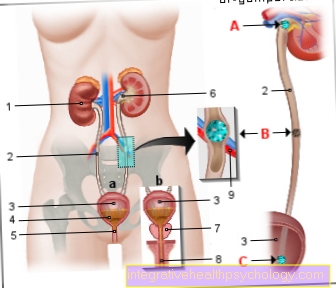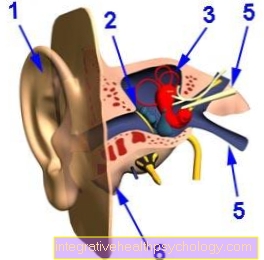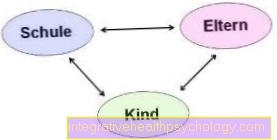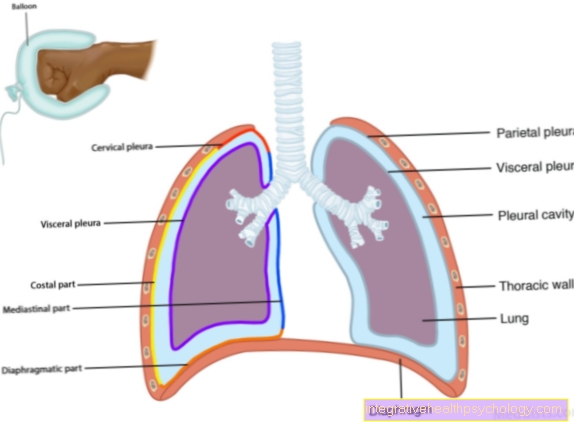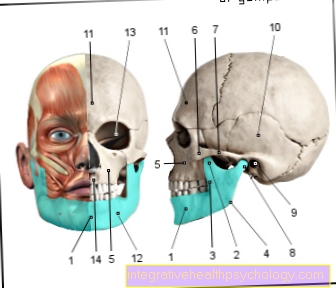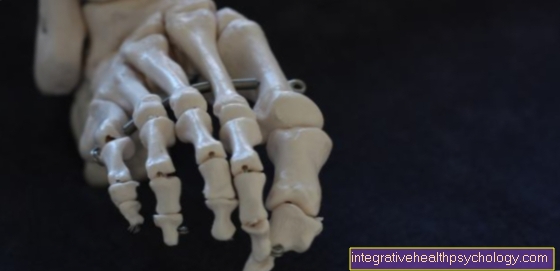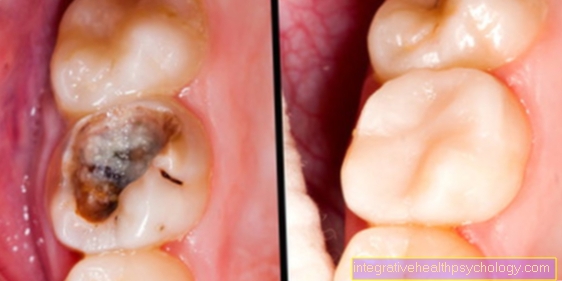Self-treatment of positional vertigo
Attempts at drug treatment, chirotherapeutic measures on the cervical spine and acupuncture have proven to be essentially ineffective in diagnosing benign positional vertigo.
Aggravation or even chronification can occur if those affected automatically avoid any dizziness-inducing movement.
The self-treatment options (positioning exercises or liberation maneuvers) result from the mechanism of the benign positional vertigo.
Two (Eplay and Semont maneuvers, both maneuvers are suitable for treating disorders in the posterior semicircular canal) of three known positioning maneuvers in treatment promise a high level of effectiveness with good therapeutic success.
The majority of those affected can be helped with just a few treatments (1-7), especially if an additional self-exercise program (self-treatment = threefold improvement in the chances of recovery) is carried out on a regular basis.
Before performing the positioning maneuver, the affected ear must be diagnosed.
The implementation of the self-exercise program (self-treatment) should be regularly demonstrated and checked by the physiotherapist or doctor. Cure chances are given in the different studies between 60 and 90%.
Read our general article about this: Vertigo training
Eplay maneuvers



The aim of the Eplay maneuver is to wash the small salt crystals out of the posterior semicircular canal.
Important
Before the patient is supposed to perform the positioning maneuver, information about any dizziness reactions occurring during the exercise and the practical demonstration by the physiotherapist is essential.
Starting position:
sit with your legs outstretched on a bench or on the bed, with your head turned towards the affected ear side
Exercise execution
While maintaining the head position, the patient can quickly fall on their back. The shoulders are on a pillow so that the head is slightly overstretched. wait approx. 20-30 seconds. When lying down, she / he first turns his / her head to the opposite side, then turns the entire body over to the side. wait approx. 20-30 seconds. When the dizziness is over, he will straighten up over the other side to sit. taining the correct head position is crucial for the effectiveness of the exercise.
This sequence of movements should be carried out 3 times in a row and 3 times a day in self-treatment. This can trigger the familiar positional vertigo. After the exercise series, the patient should not sleep flat for the next 48 hours, but with the upper body raised so that the salt crystals do not slip back into the semicircular canal. If you have not experienced dizziness or nystagmus while practicing or in everyday life for 24 hours, stop the exercises.
Another description of the exercises can be found here.
Semont maneuver




If performing the Epley maneuver does not lead to the desired therapeutic success, the similar Semont maneuver can be tried.
The aim of the Semont maneuver is also to wash the small salt crystals out of the posterior semicircular canal by moving in the opposite direction, as in the Eplay maneuver.
Before the patient is supposed to perform the positioning maneuver, it is useful to be informed about any dizziness reactions occurring during the exercise and the practical demonstration by the physiotherapist.
Starting position
Sit in the middle of a bench, couch or bed with your head turned to the healthy side by approx. 45 °
Execution of the exercise: rapid positioning on the opposite side (affected side, face up), thereby provoking dizziness and nystagmus - approx. 3 min. Wait - After the dizziness has subsided, the patient should turn around with a swing to the other side of the body while maintaining the head position (head turning to the healthy side). (Unaffected side, face downwards) Attacks of vertigo and nystagmus are awaited, after the symptoms have subsided - approx. 3 minutes - the patient can slowly sit down again while maintaining the head position.
This sequence of movements should be carried out 3 times in a row and 3 times a day in self-treatment. This can trigger the familiar positional vertigo. After the exercise series, the patient should not sleep flat for the next 48 hours but with the upper body raised so that the salt crystals do not slip back into the semicircular canal. If you have not experienced dizziness or nystagmus while practicing or in everyday life for 24 hours, stop the exercises.
For a different description of the exercises, read the article: Positional vertigo exercises
Contraindications for the Eplay or Semont maneuver
When can that Eplay or Semont maneuvers not be used:
- Uncompensated heart disease (heart failure)
- Severe occlusion of the cervical artery
- Severe painful movement restrictions of the Cervical spine with charisma in the arm / s
- Psychological problems in the sense of Anxiety / anxiety disorder
Important summary
Have the exercises checked regularly by the therapist or doctor!
Continue practicing (self-treatment), even if the dizziness recurs at the beginning!
Lots of exercise, even if the dizziness causes fear!
Rest hurts!
Avoid medication if possible, if absolutely necessary, then only for a short time!







